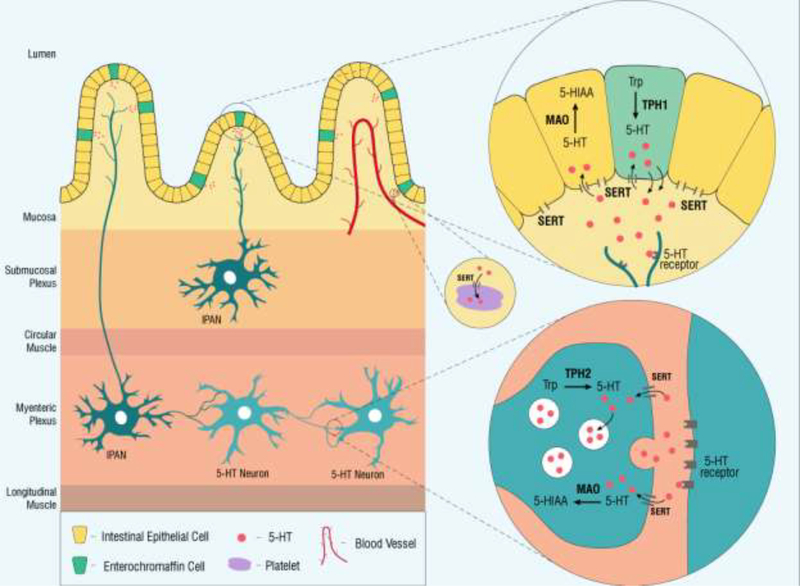Figure 1. Schematic of the synthesis, inactivation and degradation of 5-HT in the intestinal epithelium and ENS.
5-HT is synthesized in the intestinal epithelium by enterochromaffin (EC) cells from tryptophan (Trp) by the rate-limiting tryptophan hydroxylase 1 (TPH1). Luminal distention results in the basal release of 5-HT into the interstitial space of the lamina propria, leading to activation of 5-HT receptors on intrinsic primary afferent neurons (IPANs) in both the submucosal and myenteric plexuses. 5-HT is inactivated through the actions of the serotonin reuptake transporter (SERT), which is expressed by intestinal epithelial cells. Once intracellular, 5-HT is degraded by monoamine oxidase (MAO) into 5-hydroxyindoleacetic acid (5-HIAA). Platelets also express SERT; they are thought to reflect stores of intestinal epithelial 5-HT that are picked up as platelets pass through enteric circulation. The ENS contains serotonin-synthesizing neurons. Enteric neurons utilize a different isoform of tryptophan hydroxylase, TPH2, to synthesize serotonin from tryptophan, which is then stored in synaptic vesicles. Secreted 5-HT activates post-synaptic receptors and is then inactivated through pre-synaptic reuptake by SERT, where it can be packaged into vesicles once again for release or degraded by MAO into 5-HIAA.

